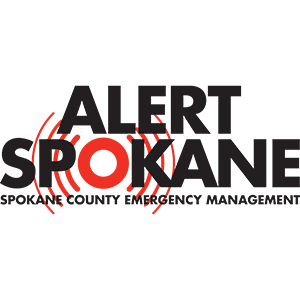Public Health Emergency Preparedness & Response Program
During an Emergency
Stay informed. Stay safe.
Stay Informed
Know how to get accurate information during an emergency or disaster. Spokane County residents have access to several information sources, including Spokane County Emergency Management’s Alert Spokane, a local emergency notification system. Reliable local news sources on TV, radio or the internet can also provide important information. A weather radio provides up-to-date information during weather emergencies. If you use social media, get important information from direct sources. Don’t rely on rumors. Check the feeds from your local fire district, local news channels, and weather stations to stay informed during an emergency.
Learn about and register for Alert Spokane.
Evacuation Guidelines
During an emergency, you may need to stay home or evacuate to escape immediate threats. Spokane County Emergency Management provides guidelines for when to stay, when to prepare to leave, and when to evacuate. Evacuation guidelines are organized into four levels of action:
Level 1: Ready
Conditions are severe. Prepare to leave your current location.
Level 2: Set
Be prepared to leave at a moment’s notice. Dangerous conditions threaten your residence or business. Hazards severely limit emergency services protection. If you or anyone at your location has special needs, pets or livestock, you should leave at this time.
Level 3: Go
Leave immediately. This may be your only notice. Current conditions present an immediate threat to your life and safety, and emergency services may not be able to assist you. You will not be allowed to return until conditions are safe.
Shelter in Place
Go indoors with your children and pets. Close windows and doors. Monitor TV, local radio, and social media for further instructions.
Watches and Warnings
Know the different terms used for weather threats.
- A watch means that there is a high possibility that a weather emergency will occur. When a severe storm watch is issued for your area, continue to check the radio, television, local news websites, or official social media channels for updates. Pay attention to visible weather changes around you. Check your supplies and prepare.
- A warning means that a weather emergency is already happening or will happen soon. When you hear a warning, take immediate action.
Coping with Disasters
Disasters are upsetting. Everyone has different ways of coping with the stress and strain of emergencies. Anxiety, sadness, grief, and anger are normal reactions to abnormal events. Children are especially vulnerable to disaster-related trauma and emotional distress. Behavior changes, intense fear and strong emotions are common in children who have experienced a disaster.
The national Disaster Distress Helpline is available 24/7 to anyone experiencing emotional distress related to a disaster. Trained counselors provide crisis counseling, information on how to recognize distress, referrals to local care, and tips for easing stress and coping with disaster.
For more information about coping with disasters, visit the following websites:
- Ready.gov Coping With Disaster
Washington State Department of Health

Disaster Distress Hotline
24/7 crisis support service offers free, anonymous, multilingual disaster crisis counseling.


